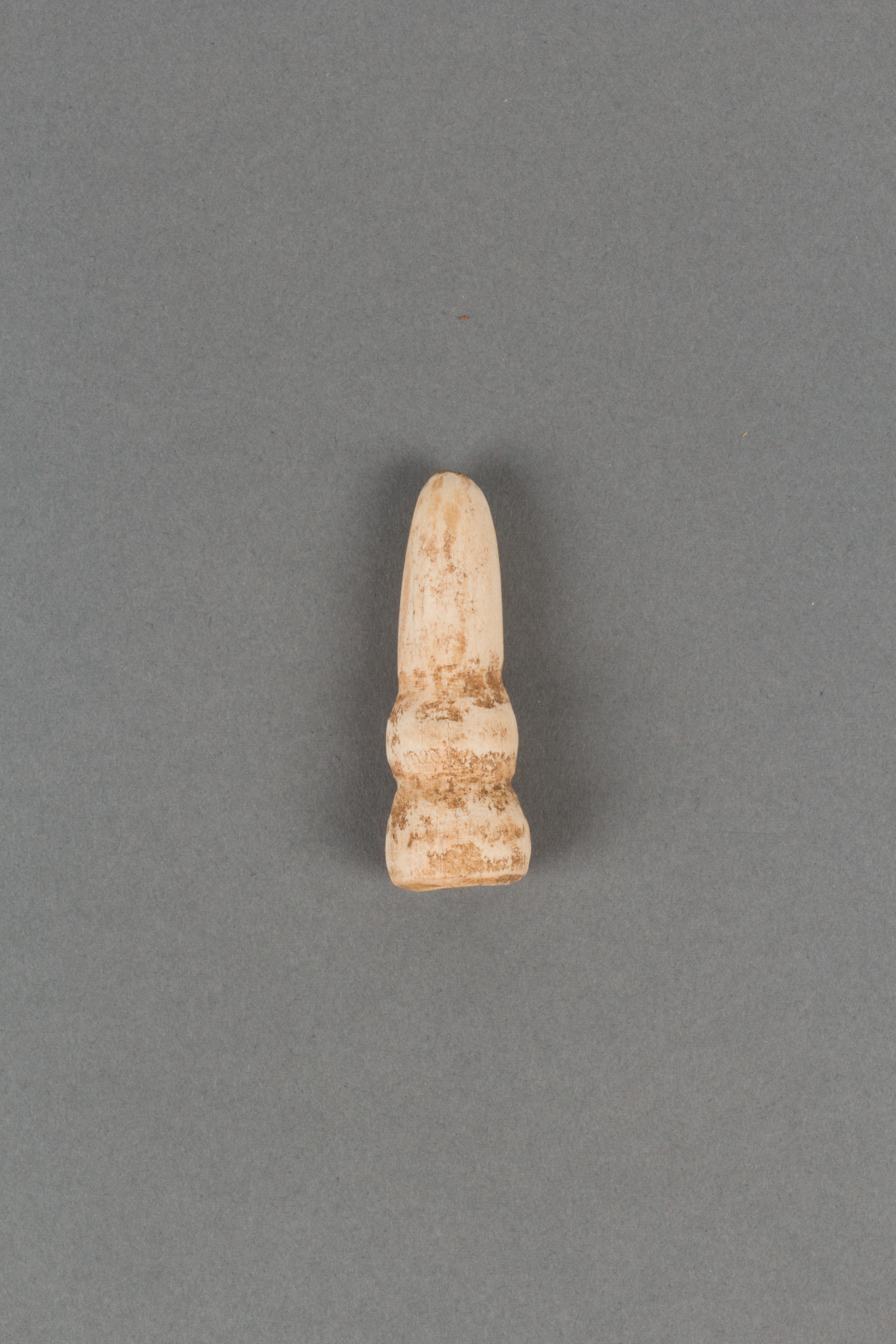Nock of a bow
Final Jōmon period (ca. 1000–300 BCE)
Not on view
The Jōmon period is the earliest period in Japanese history, lasting from roughly 14,000 to 300 BCE. This device, called a nock, would have held the string onto a bow, facilitating the use of the bow and arrow to hunt a wide variety of land animals which were key to the survival of the Jōmon people’s hunter-gatherer society. Archaeological evidence indicates that the Jōmon hunted over 60 species of mammal throughout the Japanese archipelago, including tanuki (Japanese raccoon dogs) and monkeys, both of which would likely be considered unpalatable in contemporary Japanese society.
Due to rights restrictions, this image cannot be enlarged, viewed at full screen, or downloaded.
This artwork is meant to be viewed from right to left. Scroll left to view more.



